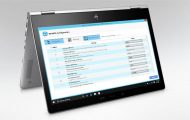Article – From the horse’s mouth
Google Nest
How ultrasound sensing makes Nest displays more accessible {The Keyword blog post)
My Comments
Google is implementing in their Nest Hub smart-display products an automatic display-optimisation technology that is based on technology that has been used for a very long time.
Ultrasonic technology has been used in various ways by nature and humans to measure distance. In nature, bats and dolphins which don’t have good vision use this approach to “see” their way. It is used extensively in military and civillian marine applications to see what is underneath a boat or around a submarine and is also used as a common medical-imaging technique.
As well, in the late 1970s, Polaroid implemented ultrasound as part of their active autofocus system, which ended up as a feature for their value-priced and premium instant-picture cameras. Here, this was used to measure the distance between the camera and the subject in order to adjust the lens for proper focus. There were limitations associated with the technology like not being able to work when you photograph through a window due to the ultrasonic waves not passing through the glass.
But Google has implemented this technology as a way to adjust the display on their Nest Hub smart displays for distant or close operation. The front of a Google Nest Hub has an ultrasonic sensor that works in a similar way to what was used in a Polaroid auto-focus instant-picture camera.
But rather than the Polaroid setup being about using the distance measurement from the ultrasonic sensor to adjust a camera’s lens, this application adjusts the display according to the user’s distance from the Nest Hub. If you are distant from the Nest Hub, you would see reduced information but the key details appear in a larger typeface. Then if you come closer to the Nest Hub, you would see more detail but at a smaller typeface.

The Google blog article described this as being suitable for older users and those of us who have limited vision. The fact that you have the ability to see key information in a large typeface at a distance can make the Nest Hub accessible to this user group. But others can’t see deeper information unless they are very close to the device.
End-user privacy is still assured thanks to the use of a low-resolution distance-measurement technology whose results are kept within the device. As well, there is a menu option within the Google Home app’s Device Settings page to enable or disable the feature.
At the moment, it is initially being used for timer and current-time display as well as displaying travel time and traffic conditions for a planned journey that you set up with Google Maps. But Google and other software developers who develop for the Google Home ecosystem will add distance-sensitive display functionality to more applications like appointments and alerts.
Some people could see this technology not just for optimising the readout on a smart display but could even be used to ascertain whether people are actually using these devices. This could then be used for such functionality like energy-saving behaviour where the display turns off if no-one’s near it.
But what Google has to do is to license out this technology to allow others to implement it it to other fixed-display-based devices. Here, it could become of more use to many who don’t go for a Google Nest Hub.
but to add more functionality like appointments, alerts, reminders


